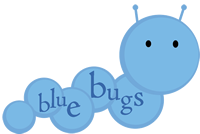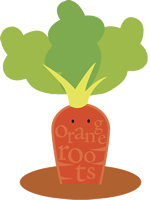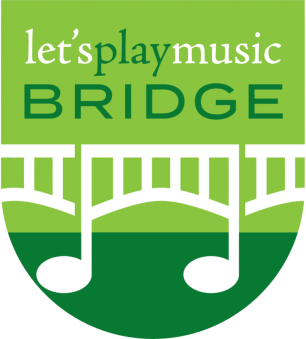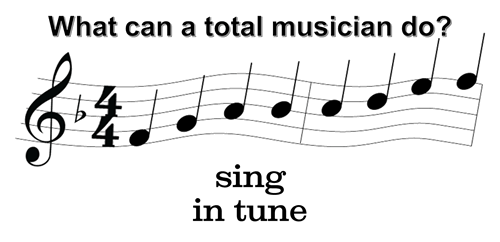|
Here you can find all the information for the classes each week!
|
Brown Teddy Bears #13
Wednesday, December 4, 2024 | Brown Teddy Bears Lessons

Lesson #13
Has your child found a favorite activity from this semester that they insist on doing again and again? What might appear repetitive and monotonous to adults is actually a powerful learning experience for the young child. Their innate desire for repetition is their brain’s instinctive way of helping them master skills and concepts.
Instrument day is coming up soon! Each family will have the opportunity to share an instrument with the class. You can even bring something homemade! Anything that makes sound will be fine! :) If you play an instrument (especially if it's one of our semester instruments), we'd love for you to bring and demonstrate it for us! You are welcome to invite someone else to class if they would like to come do a short little instrument performance for us! I'll also have some instruments to demonstrate and the kids will have the opportunity to play some of them! Please let me know what you will bring, just to help me with planning.
Next week we'll sing these in class:
- Four Seasons
- Weather Bear
- Name the Instruments
- Little Boy Blue
- It's Raining
- Teddy Bear, Teddy Bear Turn Around
- The Bear Went Over the Mountain
- Going to the Zoo
- Flight of the Bumblebee
- Old Brass Wagon
- Your child's favorite activity song! Just text me to tell me what it is and I'll be sure to include it next week!

How the brain is structured and how well it functions is determined by the frequency, duration and intensity of an activity. The neural pathways in the brain ‘wire and fire’ in response to activation that occurs when a child experiences stimulation to their sensory systems. Messages in the form of electrical signals are sent along the nerve fibres from the body to the brain. The brain then sends electrical messages back along the outgoing nerve pathways to the body. The more practice the nervous system has at receiving and sending messages, the more efficiently it operates and the more effectively a child acquires a skill.
Repetition is fundamental to helping young children learn. Repeating words, actions and songs benefits memory and encourages language acquisition.
Rhyming helps the children notice and work with the sounds within words.
Optional home fun activity: Color the Teddy Bear March on page 17 in your workbook
(Remember, these activities are optional but can be a great bonding experience to do with your child during the week.)
Need more ideas for ways to use your rhythm sticks? Watch this video to see what else you may not have thought of!
Have a musical day!
-Ms. Bethany :)
Brown Teddy Bears #12
Wednesday, November 20, 2024 | Brown Teddy Bears Lessons

Lesson #12
Have you recognized many of the rhymes and songs we have used in class this semester? That’s because the Sound Beginnings curriculum primarily consists of American folk songs and chants, nostalgic songs, nursery rhymes, and well-known classical pieces.
Registration for Pink Piggies is open now for my existing Sound Beginnings families and those on my waitlist! Look for a separate email about registration that was sent out last week. Be sure to take advantage of the EARLY BIRD DISCOUNT so you don't have to pay the $20 registration fee!
Next week we'll sing these in class:
- Weather Bear
- It's Raining
- Echo Edie
- Name the Instruments
- Teddy Bear, Teddy Bear Turn Around
- Down By the Bay
- The Bear Went Over the Mountain
- March
- Rocky Mountain

Nursery rhymes are much more than entertainment. They introduce idea of storytelling, promote social skills and boost language development. They also lay the foundation for learning to read and spell. Our use of them in class promotes listening to speech patterns and understanding rhyming words. It also provides the chance to interact with peers and parents and is intended to help increase vocabulary and prepare for further literacy skills.
We added the "LA" pitch in "It's Raining" because LA is the next easiest pitch to add to the SOL-MI interval when learning to sing in tune.
Singing songs while playing games that use large motions helps children develop coordination.
Optional home fun activity: Make the Teddy Bear puppet on page 31 in your workbook! Your child will be able to use it in class next week!
(Remember, these activities are optional but can be a great bonding experience to do with your child during the week.)
Sometimes it's nice to actually see the instruments playing the songs we hear in class! Here's "March" from the Nutcracker played by an orchestra. If you keep watching, it also has "Dance of the Sugar Plum Fairy" and "Russian Dance," just in time for the holiday season!
Have a musical day!
-Ms. Bethany :)
Brown Teddy Bears #11
Wednesday, November 13, 2024 | Brown Teddy Bears Lessons

Lesson #11
Our last week of class with be "Instrument Day"! This fun lesson gives families a chance to share an instrument with the class. Do you, or someone you know, play an instrument you would be willing to share? Maybe your child wants to try a solo from the semester (vocal or on an instrument from home). Of course, performing is optional and you are welcome to just enjoy. Start talking to your child about what instrument you would like to share with the group on this exciting lesson!
Registration for Pink Piggies is open now only for my existing Sound Beginnings families! Look for a separate email about registration. You will have one week to register before I allow others to begin filling classes. I'll open up registration to those on my waitlist starting November 17th and to the general public on November 24th. You can send this link to your friends if you would like them to get on the waitlist and have a better chance of getting the desired class time!
Next week we'll sing these in class:
- The Four Seasons
- It's Raining
- Major Scale
- Teddy Bear, Teddy Bear Turn Around
- Down By the Bay
- The Bear Went Over the Mountain
- A Tisket, A Tasket
- March
- You Are My Sunshine

In addition to teaching musical concepts and Kindergarten skills, Sound Beginnings also introduces children to several life skills. Many of the activities we do in class encourage children to learn to share, take turns, express creativity, listen, or interact and work together with a group.
The instrument families are grouped by the way the instrument produces vibration. The saxophone looks like a brass instrument, but because you blow air into it through a reed, it is a woodwind instrument.
Sharing can be one of the most difficult skills for a young child to learn. With practice and lots of positive reinforcement, toddlers will learn over time that sharing is an important part of life.
Optional home fun activity: Cut out the Down by the Bay rhyming dominoes on page 29 in your workbook. You can use them in class next week if you want!
(Remember, these activities are optional but can be a great bonding experience to do with your child during the week.)
Here's a fun video with some different verses of "Down By the Bay" that you can learn!
Have a musical day!
-Ms. Bethany :)
Brown Teddy Bears #10
Wednesday, November 6, 2024 | Brown Teddy Bears Lessons

Lesson #10
We are now three-quarters of the way through this semester. Time really does fly when you are having fun! If you are interested in continuing your musical adventure, be sure to register for next semester’s Pink Piggies class. Take advantage of the Early Bird Discount so you don't have to pay the $20 registration fee!
Next week we'll sing these in class:
- Weather Bear
- It's Raining
- Name the Instruments
- Major Scale
- Down By the Bay
- March
- The Bear Went Over the Mountain
- A Tisket, A Tasket
- Old Brass Wagon

You may have noticed by now that a couple of our songs only have two pitches. Both ‘Fall is Here’ and ‘Snowman’ use the SOL-MI interval as it is the easiest interval for the child to learn to recognize, imitate, and sing in tune. Though this interval is part of the major scale, and therefore major in it’s tonality, it is a minor third. SOL-MI songs allow children to have successful singing experiences as they develop in-tune singing voices.
Our next semester of Sound Beginnings classes is Pink Piggies! We will be learning about money, Spanish, and farm animals. You will receive an email with information on how to get registered.
Optional home fun activity: Cut out the letter on page 31 in your workbook and play at home with your family!
(Remember, these activities are optional but can be a great bonding experience to do with your child during the week.)
Here's a video with a sweet big sister singing "You Are My Sunshine" to her little Down Syndrome brother. Near the end it shows her other brother singing along as well. SO CUTE!
Have a musical day!
-Ms. Bethany :)
Brown Teddy Bears #9
Wednesday, October 30, 2024 | Brown Teddy Bears Lessons

Lesson #9
Sound Beginnings believes all children are musical by nature, but need some guidance to refine their natural interest into skill and develop the musician already present within each child. By participating in class, listening to the CDs at home, and encouraging your children to explore music, you are growing a musician!
Next week we'll sing these in class:
- The Four Seasons
- In My Class I Have Some Bells
- Here is the Beehive
- Snowman
- Down By the Bay
- A Tisket, A Tasket
- Baby Bumblebee
- March
- Old Brass Wagon
- You Are My Sunshine

Sound Beginnings encourages children to express themselves, try new things, and enjoy the world of make believe! Dancing expressively to classical music, exploring with instruments, and dramatizing stories help develop children’s natural desire to be creative. Creativity builds confidence in children and helps develop problem-solving skills that carry into adulthood.
In our ABC Song, the "unvoiced" sounds do not have a vowel sound attached. Pronouncing these sounds correctly will help your children as they start to sound out words they are reading.
Dramatizing a story through a song improves language development and develops a child's understanding of themselves and the world around them.
Optional home fun activity: Color the Flight of the Bumblebee dance on page 16 in your workbook
(Remember, these activities are optional but can be a great bonding experience to do with your child during the week.)
Here's a video about Vivaldi, who wrote 4 violin concertos named "The Four Seasons".
Here's a videowith the music to "The Four Seasons" and a fun animation that you can watch or just put on in the background and appreciate! Better yet, go ahead and dance to it! It's 40 minutes long, and it's so beautiful! Enjoy!
Have a musical day!
-Ms. Bethany :)














